Why the heck would anyone take a luxury SUV platform, like a Lexus GX 470, and turn it into a trail rig? It’s a fair and painfully obvious question, and it’s one that requires a little explanation to really understand why someone would go down this path.
Despite its “luxury” tag, a stock GX 470 is no slouch in terms of off-highway capability, and that’s thanks in part to it having very similar DNA with well-known vehicles you see on the trail everyday. Most people would never know GX 470 is capable though, because this family-focused SUV is aimed more at the upper crust of the SUV market. Poke around a little and you’ll see the GX’s capability isn’t lost on everyone – hell, even Four Wheeler Magazine awarded it Four Wheeler of the Year in the early 2000s, even though some readers scoffed at the idea.
Sometimes using a unique platform can lead to a ton of headaches during a build due to little aftermarket support or minimal upgrade options. The Lexus GX 470 has far more available out there than most think, and that’s what ultimately gave us the green light to move forward on the road less traveled.
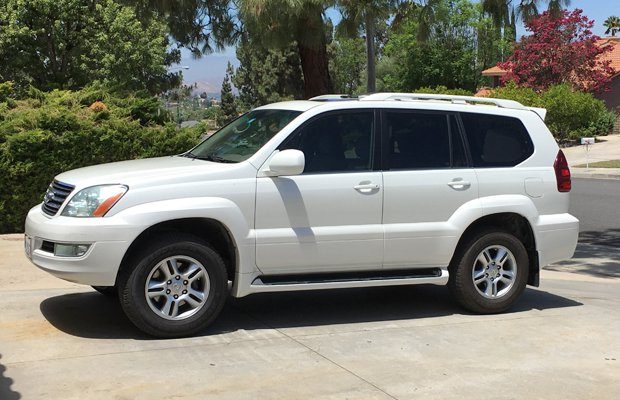
Prado 120 Platform
The Lexus GX 470 was produced from 2003 to 2009, and it was replaced in 2010 with the current GX 460. The GX 470 sits on the Toyota J120 platform. Overseas, the J120 is used for the Land Cruiser Prado (not to be confused with our U.S.-based Land Cruiser built on the larger J200 platform), which looks very much like our GX 470 with a few styling tweaks. Here in the States, the J120 platform was used extensively on the 4Runner, FJ Cruiser and Tacoma, so the GX 470’s chassis is not far off from very familiar and capable off-roaders.
For the most part, many of the aftermarket suspension components available for the 4Runner and FJ will work on the Lexus GX 470.The tougher parts to source are bumpers, but there are a few great companies building parts specifically for the unique shapes and lines of the GX 470.
What’s to Like, What’s Not
The GX 470 is not a complete off-road sleeper to everyone, but now that prices are coming down on used units its popularity is on the rise. The GX 470 separates itself from the other vehicles that share the same chassis thanks to a different upper half and a host of unique features, some of which are good and some that aren’t so much.
One thing that separates the GX 470 from other 120 SUVs like the 4Runner or FJ Cruiser is its standard 4.7-liter V8 engine. The 4.7 is available on the 4Runner, but the Lexus version (which calls for premium fuel) is rated to produce 263 hp (3 more hp than the 4Runner) and 323 lb.-ft. of torque (17 more lb.-ft. than the 4Runner); of course you can run 87-octane without grenading the engine, as it is designed to recalibrate to avoid knock, but Lexus does advise using 91. We reached out to Lexus to clarify exactly how these engines differ, and we were simply told the engine on the GX was calibrated to work with 91-octane to maximize power. That said, both the 4Runner and GX 470 4.7s feature the same 10.0:1 compression ratio, so pinning down exactly how Lexus squeezed out the extra performance is a riddle we didn’t completely solve.
One key thing to note about the Lexus GX 470, especially if you’re buying one used, is that the 4.7L V8 uses a timing belt (it was later changed to a timing chain on the GX 460). The belt is stout and built to last more than 150,000 miles, but it’s suggested to be swapped out near the 100K mark. It’s not a cheap swap (or a simple one), so it’s important to check if the previous owner had done it… and in our experience, most hadn’t or didn’t even know what we were talking about.
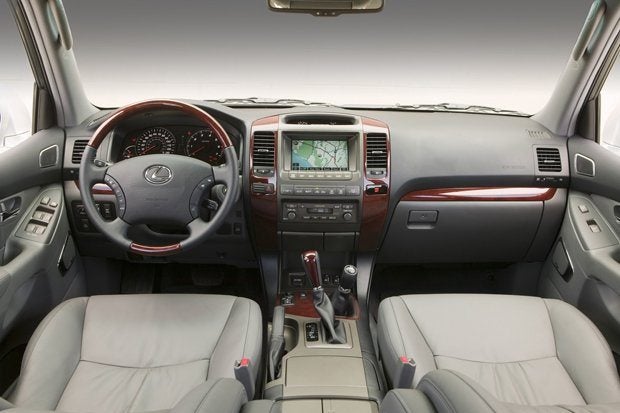
Unlike the 4Runner, the GX 470 is only available in full-time four-wheel-drive, and we’re happy to note it does feature a transfer case and manual lever to shift from 4 High into 4 Low for slow-speed crawling; the GX has a 33.7 to 1 crawl ratio. The GX 470 also comes with a selectable center-locking differential to help distribute power more evenly from wheel to wheel for additional grip on the trail.
Compared to the 4Runner or FJ, the Lexus GX 470 has a more luxury-focused interior, with standard leather seats with electronic adjustment controls and an optional third-row for the rear cargo area. It also features an air suspension system on its live rear axle to adjust ride height for both on- and off-road driving, and this also help provide some additional clearance when getting in the dirt. The downside to the air suspension is that it can be a costly fix should it break.
Another option found on the GX 470, and a few other Toyota and Lexus models, is KDSS, or the Kinetic Dynamic Suspension System. This system is designed to improve overall stability and off-road performance by using hydraulic cylinders to help stabilize the vehicle when cornering or in off-road situations, and it also automatically disconnects the sway bars for improved flexibility and articulation on the trail. Some swear by the system and its improvement to overall handling, but it can make aftermarket upgrades down the road a little more challenging to work around because of the KDSS components along the frame. It’s also tricky to find out if a vehicle has it. If you’re trying to determine if a GX does have KDSS, the best way to check is to turn on the ignition and look for a KDSS light flashing on the instrumentation at startup. The other option is to dip your head under the vehicle and look for a hydraulic pump and lines on the driver’s side frame rail.
One downside to owning a Lexus is that replacement parts can be a little more expensive than Toyota parts. We decided to eliminate one of the most expensive fixes on the GX in the air suspension, which we will be replacing with aftermarket coils from Icon Vehicle Dynamics and a conversion kit from MetalTech4x4. We also will be replacing the major suspension components with Icon pieces, so a KDSS-equipped GX, which is not ideal for anything lifted more than 2 to 2.5 inches, was not a good fit for us.
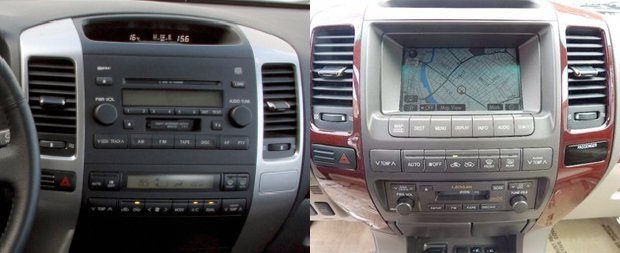
Another costly piece on GXs is the navigation. Unfortunately, Lexus incorporated the GX’s HVAC controls on the touchscreen of the navigation, so if the unit ever fails you’re without air adjustment – and it’s not a cheap fix because the entire nav unit needs to be swapped out (technically you can still turn on and off the air, but you can’t fine tune it as well). There are GXs without navigation and we hoped to find one, but in our experience they are tougher to find; at one point, three models were available without nav in our area; a few weeks later we couldn’t find one within 200 miles.
Buying a Lexus GX 470
After hunting around for a few months and gauging the market, we tracked down our Lexus GX 470 from a private seller on Craigslist. In our Southern California location, there’s a wide selection of GXs – Craiglist, AutoTrader, Carmax and local dealers all offered options. Hoping to find one with plenty of life left in the stock engine, we came across a variety of vehicles with a wide range of prices. Salvage titles aside, the least expensive GX we saw was $8,000 with over 200,000 miles, and the most expensive was a way-overpriced 2007 model with 80,000 miles for $27,000. For the most part, the market is right in the middle of that range in the teens.
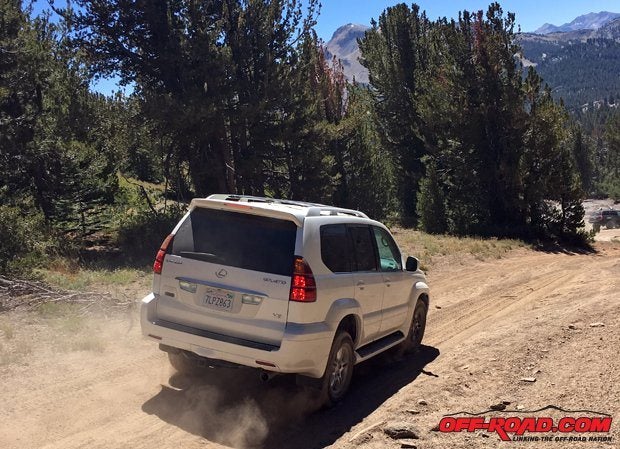
If in the market for one, there are a few things to keep in mind about each model year. The 2003 and 2004 models are perfectly fine platforms, but keep in mind they have the less-powerful VVT V8 engine (235 hp, 320 lb-ft). The 2005 model is the first to feature the upgraded VVTi engine, and the navigation unit on this model was upgraded and comes with BlueTooth connectivity. The 2007 model gets a few styling tweaks, but it also includes a newer fifth-generation navigation system, along with an auxiliary plug for iPods or phone connections (and the ability to play movies in the nav system when it’s parked). There are a few other changes throughout the years, but those are the most noteworthy. Toyota120.com actually has a lot of information on the platform and is a good resource for specs and data, and our friends at ih8mud also has quite a bit of info on GX builds as well.
When all was said and done, we ended up negotiating the purchase of a 2007 GX non-KDSS unit with a little over 120,000 miles on it for about $13,500, and although our GX has the navigation we were happy to get one of the late-model versions at least. In our experience, pricing for a vehicle with similar mileage is somewhere in the $13,000-18,000 range.
Over the coming weeks and months we’ll be highlighting a number of stories on our build of the GX 470. We’ll be upgrading the suspension with parts from Icon Vehicle Dynamics, adding a front bumper, rear bumper and sliders from MetalTech4x4, fitting larger Nitto C-Load Ridge Grapplers on new Icon Alloys, and we’ll have our friends at SoCalSuperTrucks help us dial in a few things on the rig. As always, feel free to share your thoughts in the comments below. We’ve had a lot of buzz on the build so far, and we look forward to hearing from readers and others who’ve built other GXs or plan to.
Shop for Nitto Ridge Grappler Tires
We are committed to finding, researching, and recommending the best products. We earn commissions from purchases you make using the retail links in our product reviews. Learn more about how this works.
Related Install Articles
Icon Vehicle Dynamics Front Suspension Installation
Icon Vehicle Dynamics, Metal Tech 4×4 GX 470 Rear Suspension Install
Lexus GX 470 OPOR Sliders by Metal Tech 4X4
Metal Tech 4×4 Goblin Front Bumper for Lexus GX 470
Icon Alloys, Nitto Ridge Grappler Tires
Metal Tech 4×4 Swing-Out Bumper Install
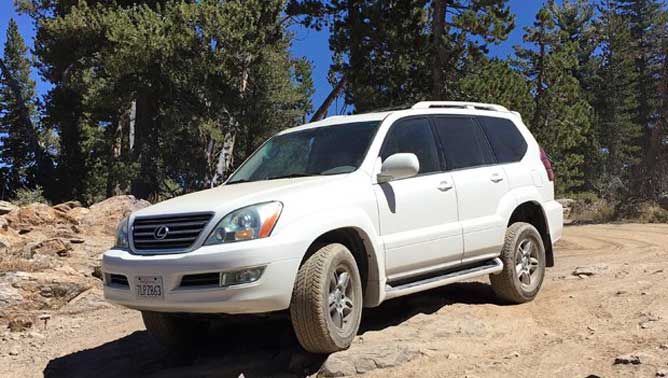
 Your Privacy Choices
Your Privacy Choices